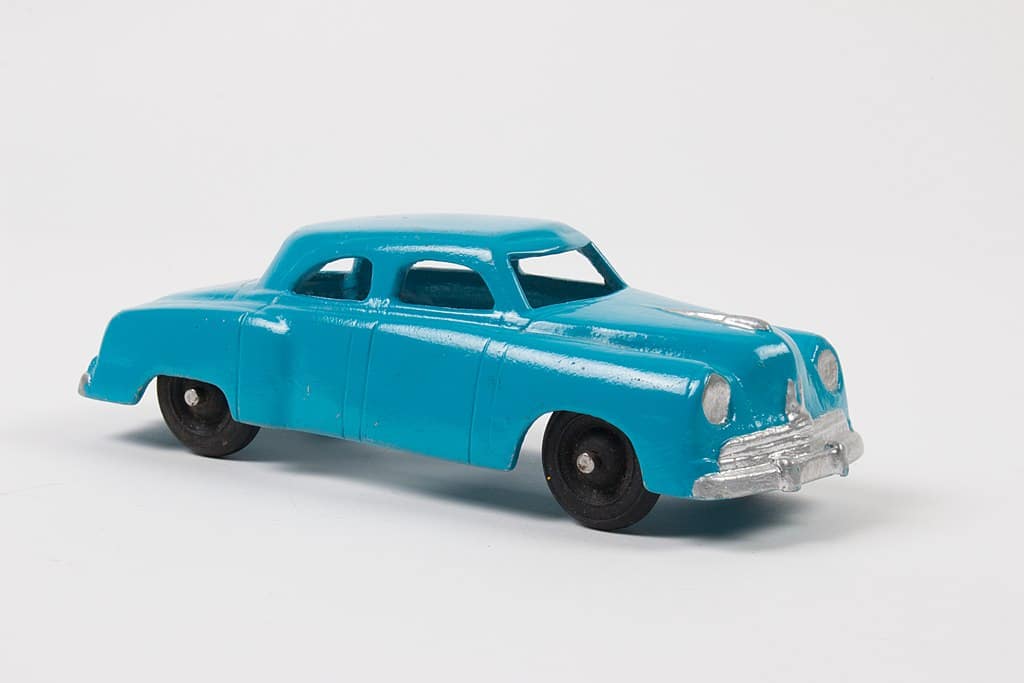In the late 1930s, the shadow of war loomed large, and this shift was reflected in 1940s toys. Military themes dominated boys’ toys, with tanks, aeroplanes and soldier figures mirroring the changing times. Girls’ toys continued to focus on domestic roles, featuring dolls, tea sets and miniature appliances.
The outbreak of World War II drastically impacted toy production. Raw materials were rationed, and factories shifted to producing war supplies. Teddy bears became thinner due to stuffing shortages. Metal for toys was banned by 1942. Despite the challenges, Woolworths, a popular retailer, strived to keep toy prices low at 6 pence. However, for many families, especially those struggling financially, new toys were a luxury. Pre-loved toys passed down from siblings became the norm.
Even in these difficult circumstances, children found ways to play. Everyday household items like newspaper, cardboard and wood were transformed into imaginative creations. Traditional games like hopscotch, jump rope, and noughts and crosses remained popular. Street games like football, rounders and roller skating provided entertainment. Small toys and games offered solace to young children during air raid shelter stays.
Post-War Boom and the Rise of New Toy Classics
The war’s end ushered in a renewed enthusiasm for sports, reflected again in 1940s toys. Subbuteo, the iconic tabletop football game enjoyed by families, arrived in 1947. This affordable and easy-to-assemble game became an instant classic. The same year saw Lego enter British shops, followed by the popular board game Cluedo in 1949.
Government rationing on traditional toy materials continued until 1952 under the Utility Scheme. However, the newly formed British Toy Manufacturers’ Association, established in 1944, supported both established and emerging toymakers. Their first Toy Fair in 1944 marked a turning point. As the British economy recovered, children’s toys increasingly focused on education and export potential. The rise of mandatory secondary education in 1944 and the National Health Service in 1948 further reflected a changing Britain. Post-war prosperity paved the way for the evolution of toys towards what we see today. Yet, as most parents can attest, the simple joy of a cardboard box remains a timeless favourite for children of any era.
